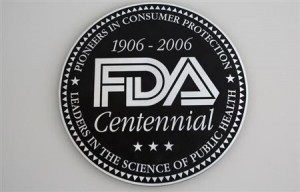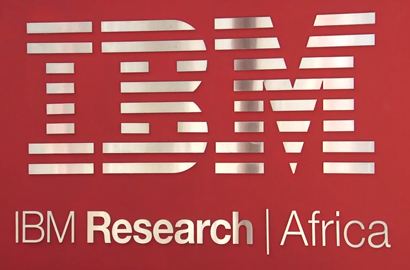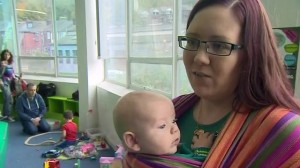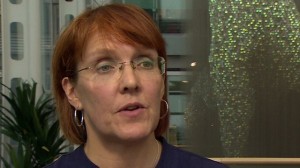 Sarepta Therapeutics Inc lost more than 60 percent of its market value after it was advised by the U.S. health regulator to find new ways to test its flagship treatment for a rare muscle disorder.
Sarepta Therapeutics Inc lost more than 60 percent of its market value after it was advised by the U.S. health regulator to find new ways to test its flagship treatment for a rare muscle disorder.
The U.S. Food and Drug Administration (FDA), citing new data and the failed trial of a competing drug, said the design and goals of Sarepta’s current trial might not be sufficient to win marketing approval for its drug.
Sarepta’s shares fell 62 percent, wiping more than $750 million off the company’s market value and making the stock the biggest percentage loser on the Nasdaq on Tuesday afternoon. At least three brokerages downgraded the stock.
“Everything I thought could have gone wrong has gone wrong – and then more stuff has gone wrong,” said Chad Messer, an analyst at investment banking and asset management firm Needham & Co, who downgraded Sarepta’s stock to “hold” from “buy”.
Sarepta is developing the drug, eteplirsen, as a treatment for Duchenne muscular dystrophy (DMD), a degenerative disorder that hampers muscle movement and affects one in 3,600 newborn boys.
Investors had been betting on a breakthrough.
Before Tuesday’s fall, Sarepta’s stock had more than doubled since October 2012, when data from a mid-stage trial showed that eteplirsen significantly improved walking ability in DMD patients.
But the FDA has now suggested that eteplirsen be tested against a placebo in a new, and potentially larger, trial, Sarepta said on Tuesday.
A placebo-controlled trial, it said, would be better than current trials in removing bias in walking ability that might be susceptible to individual effort or patient care.
“…It seems worthwhile to consider selection of other endpoints and/or populations for the next trial of eteplirsen,” Sarepta said it was told by the FDA in a meeting last week.
In its remarks, the FDA cited the recent failure of the trial of a rival drug, drisapersen, being developed by GlaxoSmithKline and Prosensa Holding NV.
That drug, like eteplirsen, works by increasing the production of a protein called dystrophin, the lack of which is the chief cause of DMD.
It failed to show a statistically significant improvement in the distance that DMD patients could walk in six minutes compared with placebo in a late-stage trial in September.
Prosensa’s shares, which had lost about 85 percent of their value since the announcement of drisapersen’s trial failure, were up 19 percent on Tuesday.
DOWNGRADES
Sarepta, previously known as AVI Biopharma, has gone more than three decades without bringing a drug to market. Analysts had previously said that they expected the company to ask for eteplirsen’s approval to be accelerated.
Sarepta said the FDA request would delay the initiation of dosing in a confirmatory study until at least the second quarter of 2014. A follow-up meeting with the regulator to discuss the confirmatory study design is scheduled this month.
“The likelihood of an accelerated approval at this point is very low. It seems like a long shot to me that the FDA is going to reverse position,” said Edward Tenthoff, analyst at Piper Jaffray.
Tenthoff, who cut his price target on the stock to $20 from $58, said he expected the FDA to require a confirmatory study with a two-year follow-up, which could delay the potential approval of eteplirsen to late 2017 or early 2018.
Both Tenthoff and Needham & Co’s Messer said the FDA and Sarepta would probably need to agree a new endpoint for trials, given the regulator’s concerns about the six-minute-walk trial.
“They thought they will be able to file early on limited data,” said Messer. “The FDA is not only saying forget about that, they probably also cannot do a full filing, and now it’s even questionable as to what the next study has to look like.”
Janney Capital Markets also downgraded Sarepta’s stock to “sell” from “neutral,” while Leerink Swann cut its price target to $17 from $44.
Sarepta’s shares were down 62 percent at $14.06 in early afternoon trading.
Source: Reuters










 incomplete, so it’s impressive that this edible ice cream dish rose to fame after an impromptu act. The ice cream cone gained popularity in 1904 at the St. Louis World’s Fair when Syrian concessionaire, Ernest Hamwi, decided to roll up some of his crisp, waffle-like pastries (also known as zalabia) to help out a neighboring ice cream vendor who ran out of dishes.
incomplete, so it’s impressive that this edible ice cream dish rose to fame after an impromptu act. The ice cream cone gained popularity in 1904 at the St. Louis World’s Fair when Syrian concessionaire, Ernest Hamwi, decided to roll up some of his crisp, waffle-like pastries (also known as zalabia) to help out a neighboring ice cream vendor who ran out of dishes. to a positive outcome, but a revolutionary one.’ In 1965, scientist Dr. James Schlatter was working on an anti-ulcer drug when he went to lick his finger to pick up a piece of paper. His finger tasted sweet, so he traced back his steps and realized that the sweet-tasting substance was aspartame. Today, this popular low-calorie sweetener (which is about 200 times sweeter than sucrose) can be found in many popular foods.
to a positive outcome, but a revolutionary one.’ In 1965, scientist Dr. James Schlatter was working on an anti-ulcer drug when he went to lick his finger to pick up a piece of paper. His finger tasted sweet, so he traced back his steps and realized that the sweet-tasting substance was aspartame. Today, this popular low-calorie sweetener (which is about 200 times sweeter than sucrose) can be found in many popular foods. preparing a batch of butter drop cookies for her guests at the Toll House Inn in Massachusetts, Ruth Wakefield decided to stick pieces of a NESTLÉ® chocolate bar into the cookie dough, expecting it to dissolve once baked. Instead, the chocolate maintained its shape. NESTLÉ® quickly caught wind of the discovery and placed Wakefield’s recipe on their chocolate bar wrappers, where it still remains today. In 1997, to honor the popular recipe’s origin, Massachusetts designated the chocolate chip cookie as its official state cookie. If you ever need some validation that failure can lead to success, take at look back at the beginnings of corn flakes. In 1898, W.K. Kellogg (who later became the founder of Kellogg’s) and his brother, Dr. John Harvey Kellogg, accidently produced a batch of flaked wheat berry after attempting to make granola. The Kellogg brothers then decided to experiment by flaking corn and the rest is history.
preparing a batch of butter drop cookies for her guests at the Toll House Inn in Massachusetts, Ruth Wakefield decided to stick pieces of a NESTLÉ® chocolate bar into the cookie dough, expecting it to dissolve once baked. Instead, the chocolate maintained its shape. NESTLÉ® quickly caught wind of the discovery and placed Wakefield’s recipe on their chocolate bar wrappers, where it still remains today. In 1997, to honor the popular recipe’s origin, Massachusetts designated the chocolate chip cookie as its official state cookie. If you ever need some validation that failure can lead to success, take at look back at the beginnings of corn flakes. In 1898, W.K. Kellogg (who later became the founder of Kellogg’s) and his brother, Dr. John Harvey Kellogg, accidently produced a batch of flaked wheat berry after attempting to make granola. The Kellogg brothers then decided to experiment by flaking corn and the rest is history. back at the beginnings of corn flakes. In 1898, W.K. Kellogg (who later became the founder of Kellogg’s) and his brother, Dr. John Harvey Kellogg, accidently produced a batch of flaked wheat berry after attempting to make granola. The Kellogg brothers then decided to experiment by flaking corn and the rest is history.
back at the beginnings of corn flakes. In 1898, W.K. Kellogg (who later became the founder of Kellogg’s) and his brother, Dr. John Harvey Kellogg, accidently produced a batch of flaked wheat berry after attempting to make granola. The Kellogg brothers then decided to experiment by flaking corn and the rest is history. In the early 1800’s, a man by the name of Lord Sandys appointed chemists John Lea and William Perrins to the task of recreating a recipe he had tasted in Bengal. Lea and Perrins attempted the sauce, but did not like the result, so they left the sauce in jars in a cellar. Two years later, the two stumbled across the sauce, decided to taste it and found something amazing: it actually tasted good. Today, Lea & Perrins Worcestershire Sauce is aged in a wooden cask for 18 months and is a popular dressing on meats and salads.
In the early 1800’s, a man by the name of Lord Sandys appointed chemists John Lea and William Perrins to the task of recreating a recipe he had tasted in Bengal. Lea and Perrins attempted the sauce, but did not like the result, so they left the sauce in jars in a cellar. Two years later, the two stumbled across the sauce, decided to taste it and found something amazing: it actually tasted good. Today, Lea & Perrins Worcestershire Sauce is aged in a wooden cask for 18 months and is a popular dressing on meats and salads. became domesticated, possibly around 5,000 B.C. To transport the animal milk, the milk was often placed in sacks made from the stomachs of animals. It’s believed that the bacteria as well as the acidity from the lining of the stomachs prompted the milk to coagulate, forming the beginnings of yogurt.
became domesticated, possibly around 5,000 B.C. To transport the animal milk, the milk was often placed in sacks made from the stomachs of animals. It’s believed that the bacteria as well as the acidity from the lining of the stomachs prompted the milk to coagulate, forming the beginnings of yogurt.

 New mothers are to be offered up to £200 in shopping vouchers to encourage them to breastfeed their babies.
New mothers are to be offered up to £200 in shopping vouchers to encourage them to breastfeed their babies.
